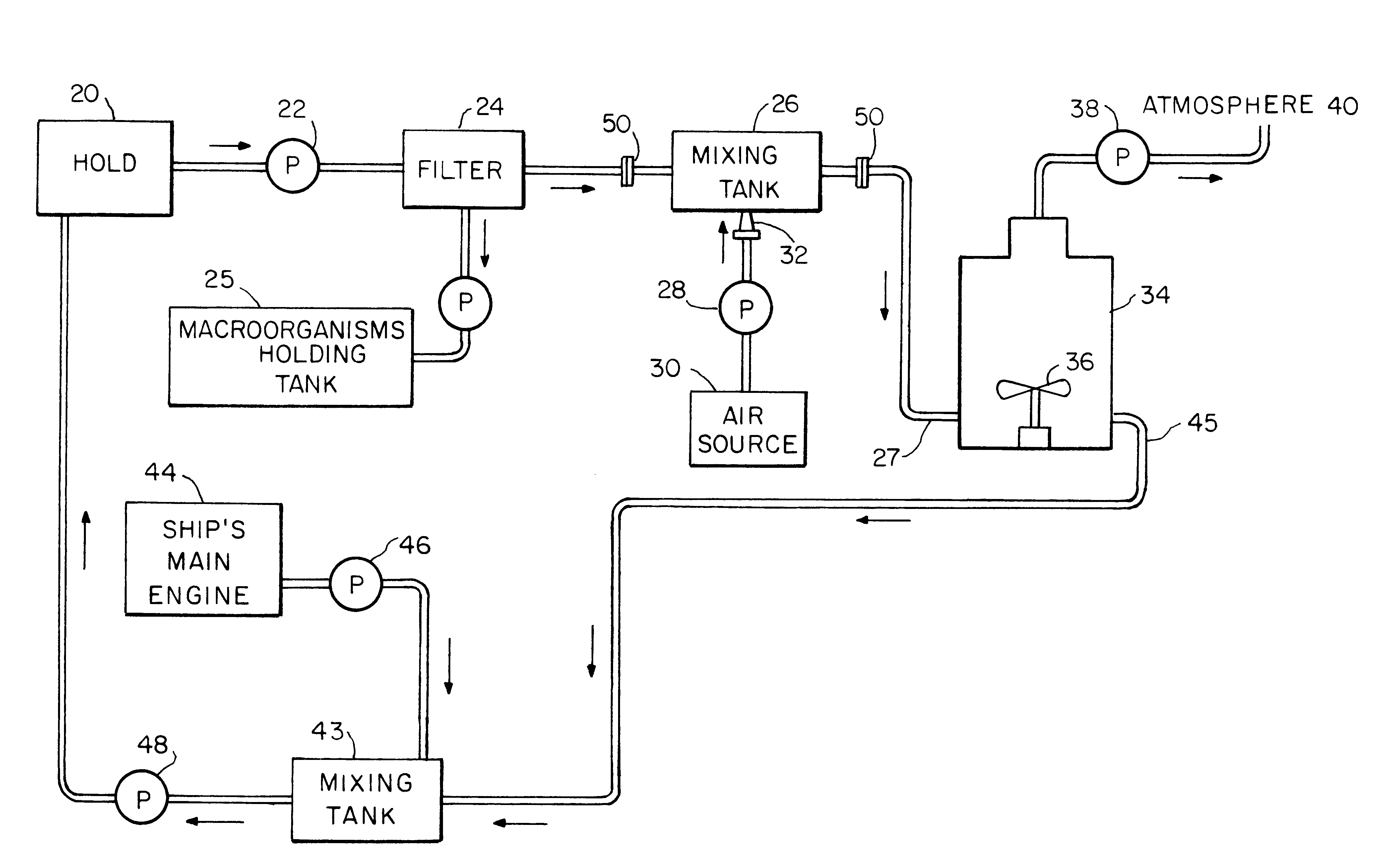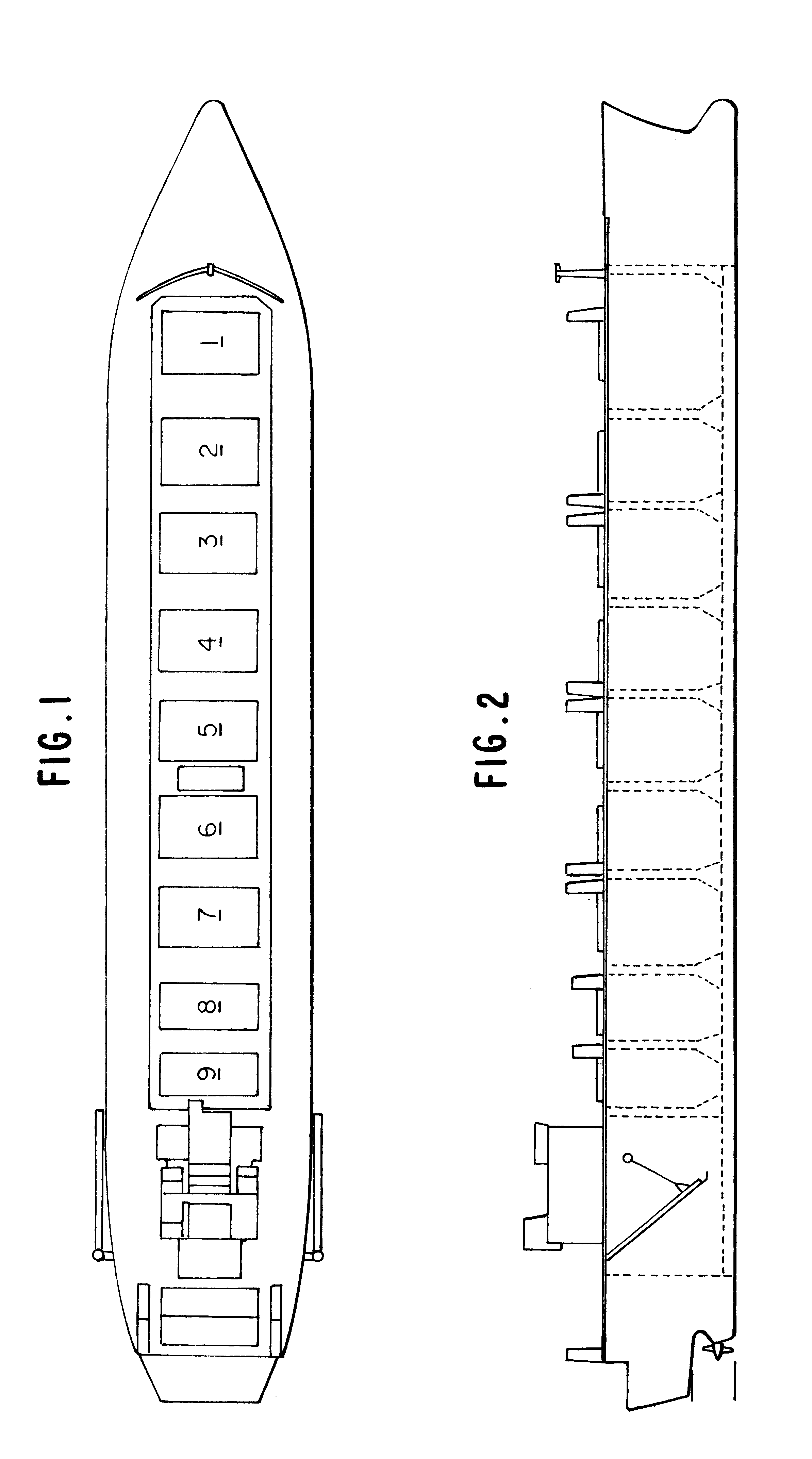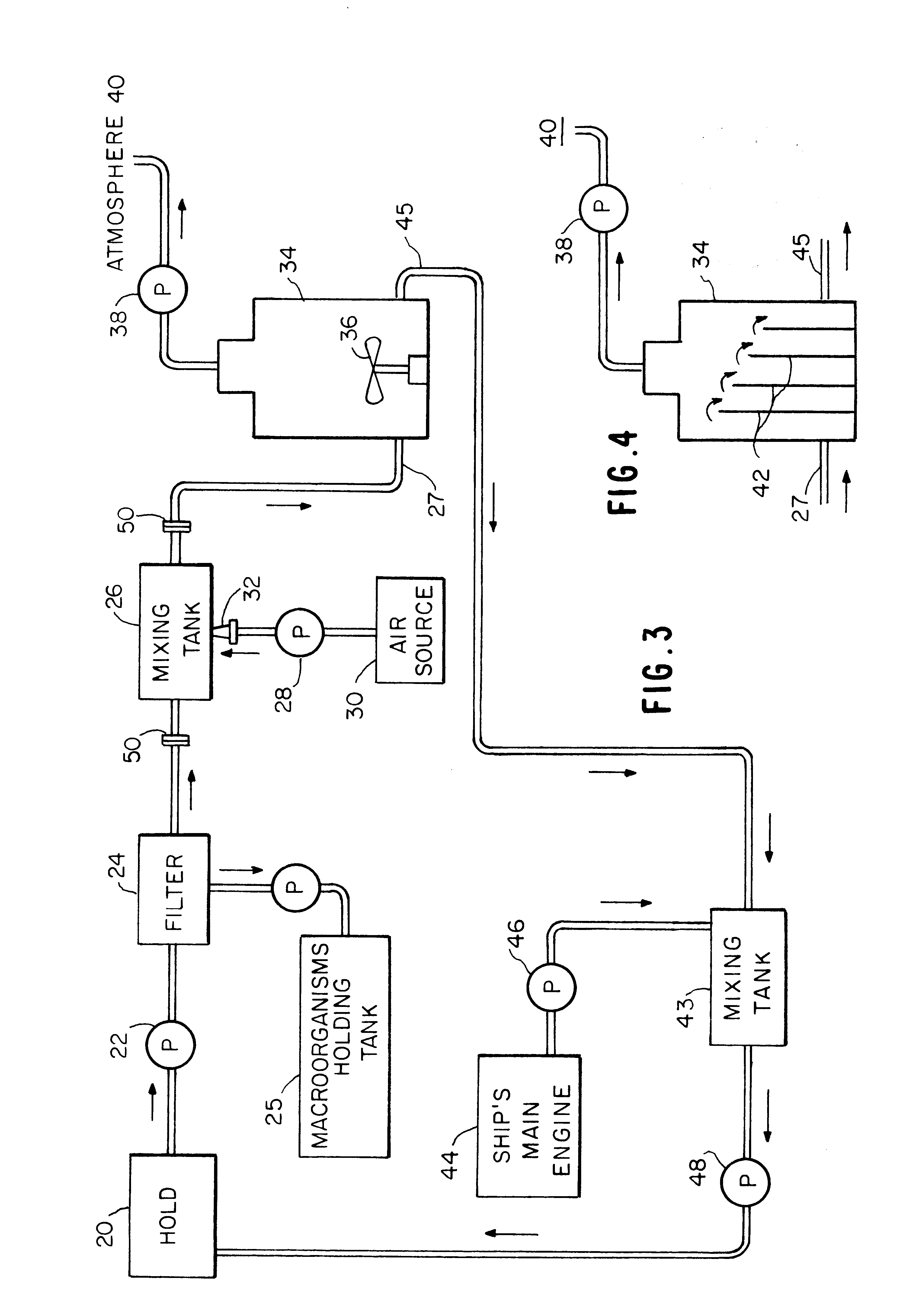Method and apparatus for killing microorganisms in ship ballast water
a technology of ballast water and microorganisms, which is applied in the field of treating water, can solve the problems of not being able to effectively remove all microorganisms from the hold of the ship, the risk of ballast water exchange on the high seas being potentially extremely hazardous, and the effect of reducing the do rate and reducing the required suffocation tim
- Summary
- Abstract
- Description
- Claims
- Application Information
AI Technical Summary
Benefits of technology
Problems solved by technology
Method used
Image
Examples
Embodiment Construction
Illustrated in FIGS. 1 and 2 is a diagrammatic representation of an actual ship, the S / S Coastal Golden, a typical vessel, in many aspects, on which an embodiment of my invention would be used to treat ballast water stored in her holds. The smallest cargo hold is about 380,000 cubic feet, and her largest cargo hold is about 680,000 cubic feet. All of her cargo holds are large enough to destabilize the vessel if wave action developed inside the hold, except when the hold is almost empty or almost full. Such a vessel is capable of carrying both oil and dry cargo. The cargo holds are numbered from 1-9, counting forward to aft. This vessel is also typical in that it would need to carry water ballast in one or more of her holds in order to safely transit open-ocean voyages without cargo.
FIG. 3 is a flow diagram which illustrates preferred embodiments of both my inventive method and apparatus. Ballast water containing at least aerobic microorganisms is pumped by a pump 22 from a hold 20 t...
PUM
| Property | Measurement | Unit |
|---|---|---|
| temperature | aaaaa | aaaaa |
| temperature | aaaaa | aaaaa |
| time colony-forming unit | aaaaa | aaaaa |
Abstract
Description
Claims
Application Information
 Login to View More
Login to View More - R&D
- Intellectual Property
- Life Sciences
- Materials
- Tech Scout
- Unparalleled Data Quality
- Higher Quality Content
- 60% Fewer Hallucinations
Browse by: Latest US Patents, China's latest patents, Technical Efficacy Thesaurus, Application Domain, Technology Topic, Popular Technical Reports.
© 2025 PatSnap. All rights reserved.Legal|Privacy policy|Modern Slavery Act Transparency Statement|Sitemap|About US| Contact US: help@patsnap.com



